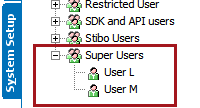As noted in the Configuring Views for Workflows section of the Workflows documentation (here), when using the WorkflowTaskColumn View Component, it is possible for users to claim and release tasks directly from the STEP Workflow Items editor or the object's Tasks tab. This is important because it allows users to 'check out' a task to work on, thus preventing other users from taking the task and working on it as well.
For example, when a user clicks the icon in the column labeled WorkflowTaskColumn on a task assigned to a group, in doing so the user has now assigned the task to themselves and opens it for editing.

This implicitly makes the task invisible to the other users in the group, assuming that they do not have the "STEP Workflow Administrator" privilege.
For normal users that do not have a special 'STEP Workflow Administrator' privilege, the following apply:
- The users can only view tasks assigned to them or a user group they are a member of
- The users can only complete tasks assigned directly to them
- The users can only edit workflow specific data for tasks assigned directly to them
It is important to notice that an object will not be locked when it is active in a workflow. That is, if a user normally is privileged to edit an object, the user can still do this regardless of how many different flows the object is active in. Thus, the assignee related restrictions mentioned above only apply to workflow data and functionality.
When a task is claimed, it is possible to release it again, assigning it back to the latest 'Group Assignee'. If the task has never been assigned to a group, the task is assigned to the default assignee for the state.
Both the claim and release operations are also available through the API Task interface (Task.claim() and Task.unclaim()).
Claiming a Task in a Workflow
In the following user group, there are two users, User L and User M.

User L signs in, opens the workflow, and navigates to the state where they can claim tasks. In this case it is the Review Data state.

Note: Should a task be initiated into a workflow by a user, the task will be assigned to the User Group in which the current user resides.
For User L to claim the state, they click on the Claim icon, ![]() , claim the task,
, claim the task, ![]() , and the assignee automatically changes to the user who has signed in, in this case User L.
, and the assignee automatically changes to the user who has signed in, in this case User L.

Once a task has been claimed, it is no longer visible to other users in the same user group.
Releasing a Task in a Workflow
To release a task, click on the Release icon, ![]() , and the Claim icon,
, and the Claim icon, ![]() , reappears. The Assignee column changes back to the user group the user is a part of, and another individual in the same user group can now view the task and claim it if needed.
, reappears. The Assignee column changes back to the user group the user is a part of, and another individual in the same user group can now view the task and claim it if needed.
